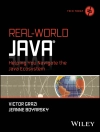Mastering R has never been easier
Picking up R can be tough, even for seasoned statisticians and
data analysts. R For Dummies, 2nd Edition
provides a quick and painless way to master all the R you’ll ever
need. Requiring no prior programming experience and packed with
tons of practical examples, step-by-step exercises, and sample
code, this friendly and accessible guide shows you how to know your
way around lists, data frames, and other R data structures, while
learning to interact with other programs, such as Microsoft Excel.
You’ll learn how to reshape and manipulate data, merge data sets,
split and combine data, perform calculations on vectors and arrays,
and so much more.
R is an open source statistical environment and programming
language that has become very popular in varied fields for the
management and analysis of data. R provides a wide array of
statistical and graphical techniques, and has become the standard
among statisticians for software development and data analysis.
R For Dummies, 2nd Edition takes the intimidation
out of working with R and arms you with the knowledge and know-how
to master the programming language of choice among statisticians
and data analysts worldwide.
* Covers downloading, installing, and configuring R
* Includes tips for getting data in and out of R
* Offers advice on fitting regression models and ANOVA
* Provides helpful hints for working with graphics
R For Dummies, 2nd Edition is an ideal
introduction to R for complete beginners, as well as an excellent
technical reference for experienced R programmers.
Table of Content
Introduction 1
Part I: Getting Started with R Programming 9
Chapter 1: Introducing R: The Big Picture 11
Chapter 2: Exploring R 19
Chapter 3: The Fundamentals of R 35
Part II: Getting Down to Work in R 49
Chapter 4: Getting Started with Arithmetic 51
Chapter 5: Getting Started with Reading and Writing 79
Chapter 6: Going on a Date with R 103
Chapter 7: Working in More Dimensions 113
Part III: Coding in R 149
Chapter 8: Putting the Fun in Functions 151
Chapter 9: Controlling the Logical Flow 171
Chapter 10: Debugging Your Code 193
Chapter 11: Getting Help 209
Part IV: Making the Data Talk 219
Chapter 12: Getting Data into and out of R 221
Chapter 13: Manipulating and Processing Data 239
Chapter 14: Summarizing Data 275
Chapter 15: Testing Differences and Relations 299
Part V: Working with Graphics 325
Chapter 16: Using Base Graphics 327
Chapter 17: Creating Faceted Graphics with Lattice 343
Chapter 18: Looking At ggplot 2 Graphics 361
Part VI: The Part of Tens 375
Chapter 19: Ten Things You Can Do in R That You Would’ve Done in Microsoft Excel 377
Chapter 20: Ten Tips on Working with Packages 387
Appendix A: Installing R and RStudio 395
Appendix B: The r fordummies Package 401
Index 403
About the author
Andrie de Vries is a leading R expert and Business Services Director for Revolution Analytics. With over 20 years of experience, he provides consulting and training services in the use of R. Joris Meys is a statistician, R programmer and R lecturer with the faculty of Bio-Engineering at the University of Ghent.












